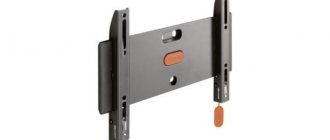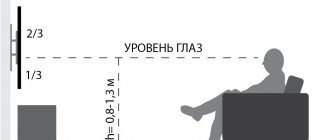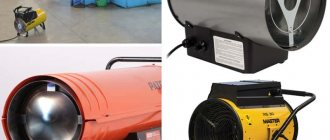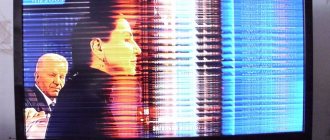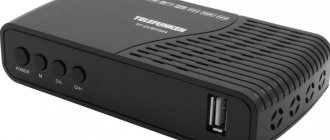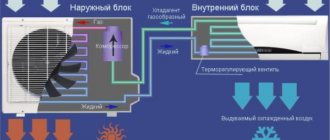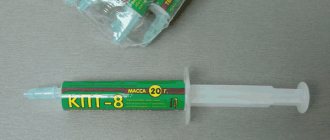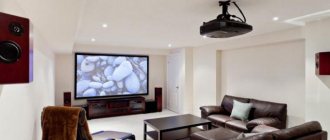Home House and cottage Repair
Almost every family has a television, and some of them have two or more televisions. Each person has it for one purpose or another, but most often it is needed for a pleasant time with loved ones, and is very popular among friends. Modern youth are not even interested in watching any regular channels on it, because they prefer to watch their TV series on it from the Internet or watch various videos on YouTube; modern TVs are also widely used for various games on XBOX.
Since the TV can be mounted in any part of the room, its position is determined according to the individual preferences of the person who wants to place his brand new TV in a place convenient for him. This place is selected for each interior separately.
No one has yet come up with restrictions on the specific location and fixation of the TV on the wall, so it can be hung absolutely anywhere in the room. But they consider it a rule to hang modern televisions at a level of at least 1 meter from the floor, and also so that the tap is at eye level.
To fix your TV, you can call a specialist in this service or fix it yourself. In order to do this yourself, you need to have basic knowledge of precise measurements, as well as know how to attach screws to the wall. Hanging a TV is not a hard job and can be completed in a couple of hours. You shouldn’t do this yourself, because it will be better if someone supports the TV while attaching it to the bracket.
Preparing for installation - 3 main rules
In order to properly hang a TV, you must adhere to three main rules:
- Study the characteristics of the equipment in detail. Directly to install any type of TV, you need to know its diagonal, weight and type of TV. This information must be in the documentation of the purchased equipment. If your device weighs more than 25 kilograms, then installation must be done by two people.
- We determine the type of wall on which the equipment will be installed. It is usually made of wood, brick, concrete or made of plasterboard. At the same time, the selection of tools, brackets, fasteners and fittings that will be needed directly for installation is made.
- Find out the location of the electrical wiring on this wall. This will help us better hide wires and cables, and also not disturb the overall electrical wiring system.
The main advantages and disadvantages of a wall-mounted TV
Let's start with the good, namely the advantages. Manufacturers of modern TVs help us with this. They are working to make our TV screen as compact as possible. This allows us to save space, which will make our interior more spacious. And the flat screen will be the highlight of our interior; it will perfectly decorate the wall, and absolutely, it doesn’t matter whether your interior has a retro style or a modern one.
Also, an additional advantage is that modern equipment is more resistant to mechanical damage. Therefore, if your TV falls on the floor, there are many chances that it will remain in working order.
Now we can talk about the shortcomings.
There are 3 main disadvantages of a wall-mounted TV (during installation):
- If it falls, for example due to a loose bracket, your TV may fall completely out of position.
- Hanging a TV on the wall is more difficult than simply placing it on a table or cabinet, so you will need the help of another person, especially if the entire diagonal of the TV is quite large.
- It is strictly prohibited to mount a TV weighing more than 35 kilograms on weak walls (plasterboard), as well as above heating devices.
Despite the disadvantages of a wall-mounted TV, it is very popular and quite easy to install if you follow the basic rules for its installation.
Types of fasteners
Wall mount, the same bracket, is a special mount that is used to mount a modern TV to a selected wall. There are 4 types of fasteners in total, their main difference is that each of them can adjust the position of the screen in its own way, thereby increasing the comfort of watching TV.
Before you buy a bracket, you need to be sure that it will fit your TV model. To do this, you need to ask what standard the bracket is and compare it with the standard for mounting our modern TV.
Let's take a look at 4 famous wall fasteners.
Rigid fastener
A rigid low-profile mount is a mount that attaches your TV 10-20 centimeters from the wall. The rigid fastener does not have an adjustment function, that is, after installation, with its help we will not be able to turn or tilt the TV. For this type of mounting, we recommend hanging your TV at head level for ease of viewing various programs and TV series.
The advantages of this type are low price, safety, and ease of installation.
The disadvantages include several factors. There is no position adjustment, as well as difficult access to the TV connectors that are located behind it.
Inclined fastener
With this mount, you can change the angle of your TV, install it at your eye level, thereby adding to the comfort of watching TV. The distance from the wall to the bracket is up to 15 centimeters. The angle of inclination varies between different brackets, but generally it is in the range of 10-25 degrees.
The advantages of this type are its affordable price, simplicity of design, and most importantly, it allows you to adjust the tilt of your TV.
The only disadvantage of this type is the lack of rotation of the TV.
Swivel fastener
This mount is unique because it can be used to move, rotate or tilt the TV as you see fit. This bracket is quite expensive, but it is worth it. Yes, it has restrictions on the size and weight of your TV, this can be found in the documentation of a specific bracket model, but we are confident that you can choose a good and fairly productive bracket at an inexpensive price.
The advantages include ease of use and beautiful appearance.
The disadvantages include the expensive cost of the bracket, as well as the difficulty in installing this fastener.
Ceiling fastener
This mount is quite popular in various offices and establishments, as it is convenient to provide advertising to visitors and colleagues. It allows the TV to rotate 360 degrees and also allows the screen to tilt. To use them you must have high ceilings.
I think everything is clear about the advantages, but the disadvantages include difficulty in installation, as well as in supplying the cable, which, most likely, will be easier to run under the ceiling than to the floor.
Limitation of mounting a TV on a wall without using a bracket
We list these restrictions in the following list:
- It is allowed to install only thin TVs such as LCD, LED and Plazma
- On your TV, all connectors should be exclusively on the sides
- The installation height should be no more than 1.5 meters;
- After installation, it is very difficult to move the TV;
- The opposite wall must be covered.
If you are going on a wall that is based on brick, then you can safely proceed with installation. But here we will give you some useful tips:
- The TV should be hung so that it is at eye level, naturally, when you are in a sitting position.
- The distance from the TV to your eyes should be equal to the diagonal of the TV multiplied by 3.
- There is no need to calculate the length of the bolts, since each set with the TV comes with bolts of a certain length. They should be used.
- On the opposite side, it is necessary to mount a plate (iron) about 5 cm higher and wider beyond the distance between the holes when mounting on the back of the TV.
How to hang a TV on the wall without a bracket?
Some flat screen TVs with small diagonal screens can be hung without additional accessories. For this purpose, there are special grooves on the back side of the panel, which are designed for attaching the plasma by hanging it on bolts screwed into the wall.
All you have to do is follow a few simple steps:
- Measure the distance between the grooves and mark them on the wall.
- Screw the bolts into the wall and hang the TV on them just like a picture or mirror.
The only difficulty that falls on your shoulders is the choice of bolts designed for the appropriate load. But this is not a problem either, since you can simply come to the store and tell the seller the weight that the bolts should withstand - they will pick up what you need.
This method, although the simplest, is not the most convenient. Since the monitor will fit very tightly to the wall, which will not allow you to change its position, place a socket behind it and hide the wires. In addition, the process of ventilation of electronic mechanisms becomes more complicated (if there are no special openings).
How to hang a TV on the wall - step-by-step hanging instructions
To make it easier for you to navigate the installation, we have provided step-by-step instructions for it. Now you can easily carry out installation.
Step 1. First, you need to choose the height of the TV. In order to do this, we sit down at the TV viewing point and select the most convenient viewing area for vision.
Step 2. You should mark the proposed TV diagram on the wall. For this we need a building level, a tape measure and a pencil. We look at our mount and mark points on the wall (as in the photo below). Don’t forget to check the horizontality of the holes that we will have; if there is even a slight distortion, this could threaten to cause the TV to fall. Therefore, we take this matter seriously.
Step 3: For this step we will need a drill. We will use it to drill holes at the indicated points.
Step 4. Using a hammer, drive the dowels into the holes, then carefully fix the brackets on the wall. Be careful with plasterboard walls, only take on this task when you are sure that your plasterboard will support your device.
Step 5. After installing the bracket, prepare the TV. Carefully insert it into the guides or tighten the bolts without much effort.
Step 6. Connect the TV to the power supply and start watching. We advise you to hide all the wires in a plastic cable so that the interior of your room is in perfect order and there are no wires in it. We can move the sockets behind the screen, using this method we will hide our wires
Now you are familiar with the instructions for mounting the TV on the wall. Watch the video to complete the entire sequence and learn a couple of nuances.
Before attaching the plate to the wall, you need to find out what material the wall is. If it is plasterboard or wood, we use special dowels, and if it is a concrete wall, then it is necessary to use dowels directly for the concrete.
How to properly hang a TV on the wall
Don't know how to properly hang a TV on the wall? It's not difficult if you follow a few rules:
- Before hanging the TV, check the electrical wiring plan so that you do not damage the wiring during installation, but it is better to entrust this task to a specialist.
- It is more convenient to hang a heavy panel (over 25 kg) with two people.
- When installing the TV on a wall, consider the ventilation space for the device. To prevent the TV panel from overheating during operation, when placing it in a niche, there should be a distance of 20-25 cm from the top and bottom edges.
Before hanging the TV on the wall, decide what type of wall is in your apartment in order to correctly select the screws necessary for mounting. They are:
- dowel for concrete;
- dowel for hollow bricks;
- in the shape of a “snail” or “butterfly” for drywall. When you tighten the self-tapping screw on the inside of the wall, the dowel opens up like a butterfly, forming a reliable stop before hanging the TV on the drywall;
- dowels of at least 30 mm - for a wooden wall.
When unpacking the box with the bracket, pay attention to the presence of instructions and be sure to check the contents. Starting work:
- remove the retractable bracket mechanism from the box;
- unscrew one of the two parts with a special key;
- determine the height of the center of the mounting bracket base on the wall using a tape measure and level;
- mark holes for screws;
- drill holes in the wall (it is better to drill concrete with a hammer drill) and insert dowels into them;
- screw the plate securely to the wall;
- Attach the second part of the bracket to the plate, having previously attached bolts to it.
Place the TV on a soft surface with the screen facing down to avoid damaging the surface. Unscrew the stand with a Phillips screwdriver. There are holes on the back panel for securing the bracket grooves. Fasten them and hang the structure on the bracket.
Installing a TV on the wall
Make sure that all the teeth fit under the plate:
- tighten the fixing bolts with a screwdriver,
- use decorative caps to disguise them,
- If your bracket does not have channel cables, use nylon cable ties and arrange the cables as desired.
To hang an LCD TV on the wall, choose the most suitable type of brackets:
- non-adjustable designs are designed to securely fix the device to the wall. In most cases, they are used to mount large diagonal TVs;
- inclined brackets with horizontal or vertical tilt are used for medium-sized screens;
- swivel models make it possible to rotate the TV screen vertically and horizontally. Small panels are attached to such brackets, as the structure cannot withstand heavy loads.
FAQ
In this section we will talk to you about the questions that people ask when they are planning to hang a TV on the wall. These questions, as well as the answers to them, are very useful for those people who are going to mount their TV on the wall.
What diagonal size is most suitable for mounting a TV on a wall?
Most people think about it and are going to buy plasmas for the floor of the wall, but before you do this, you should know whether the parameters of the room will allow you to place such large screens that your health will not deteriorate. After all, you can still buy a TV with a large diagonal, but we must think about our health.
A distance that is comfortable for vision is equal to 3-4 screen diagonals. In other words, if you have a 40-inch screen, then you should watch it from at least 3 meters away. Since 120 inches is approximately equal to 3 meters.
Many TV fans dream of a large plasma on half the wall. Buying such a TV is not difficult, but before you do it, check to what extent the parameters of your room will allow you to watch such a monitor without harm to your health.
Quite a lot of people do not take this rule into account, and thereby spoil their eyesight, and in a very short time. We ask you not to repeat their mistakes and adhere to this rule.
Restrictions when installing a TV on a wall without a bracket
You can use this method only when you do not plan to rotate or tilt the TV in order to find a more comfortable position for viewing. It should also be taken into account that installing the TV on a wall without a bracket is not available for all models. Thus, with the help of a blind mount, monitors with an LCD screen or plasma can be hung on the wall. For other models, a frame equipped with a shelf or a regular cabinet is required.
Before starting work, examine the wall. The purpose of this study is to understand whether it can withstand the weight of the TV that you are going to hang on it. Thin and fragile walls are not able to withstand heavy loads, so for large and heavy models it is better to choose concrete, brick or cinder block support.
If you have doubts about whether your existing device can be mounted on the wall, it is better to first read the documentation that comes with it - it usually indicates where and how you can place the TV.
Large diagonal TV models are recommended to be installed on a bracket that can support their considerable weight.
Devices that can be tightly mounted have connectors for connecting cords and go out to the side so as not to interfere with its adherence to the surface. In addition, if you look at the back wall of such a TV, you can see special grooves on it designed to accommodate fasteners.
What should be the height between the floor and the TV?
The height is determined only by where you will place your TV, the main thing is that it is comfortable for you to watch it. It won’t be convenient for you to lift your head and watch TV from under your forehead. For example, if you are going to hang your TV in the kitchen, then in principle you can hang it from the ceiling, but on the sofa it will most likely be uncomfortable to look at the ceiling in the evenings.
In fact, there are no standards, so there is no reason. Sit in the place where you want to watch TV and choose a place for the TV on the wall.
Where is the best place to hide cables and wires from the TV?
This question is quite popular, especially for those people who have already hung their TV on the wall. And it is much more difficult for them to hide the wires than for those who were interested in this issue at the beginning of mounting the TV on the wall.
So, if you are currently renovating, then you need to arrange sockets directly for the TV. This will require 1 TV socket and at least 3 sockets behind the screen. We will connect the TV, Wi-Fi, and also the tuner to these sockets. The best method is to hide all these sockets directly behind the TV, this is very convenient and very popular.
But if there is a cabinet under your TV that will have other equipment, then it is better to take care and make a couple more sockets in advance, even behind the same cabinet.
We recommend placing about 5 sockets at a distance of 30 centimeters from the floor, and even if you think that you won’t need them, you are deeply mistaken. After all, now technology is developing very quickly, and no one knows what else they will come up with for the TV in 3 years, but sockets will always be needed, and you won’t need to use carriers. After all, carrying items reduces the beauty of any interior.
If the repair has already been done, then the best way would be to hide all the wires in a box cable and connect it beautifully to the TV so that it does not bother anyone, and is especially not conspicuous. An excellent way out of the situation would be if you design this cable box to match the style of your wall. After all, it is on it that he can hang quite unnoticed; in other words, it can be called a camouflaged box.
But if your TV is located near a window, then the best way to hide the wires is to use curtains with an electric curtain rod. Make a socket right under the ceiling, near the place where the curtain will be. And this will be a great discreet method to hide your wires. You can ask a curtain specialist or an electrician for more details.
Where is the best place to hide cables and wires?
When installing a TV on a wall, hiding the wires is a very serious problem. Cables hanging in free flight always look unsightly and can ruin the overall interior.
Also, a power cord that is pulled to an outlet can pose a danger to your health and equipment. You can accidentally pull the cable or trip over it, which subsequently threatens at least damage to the connectors. And if there are children and animals in the house, they can get an electric shock.
It is recommended to tie all the wires into neat bundles and cover them with panels, boxes, cable ducts, moldings, or hide them in chrome tubes. The choice of “case” depends on the style of your interior. This can be done even when the room has been completely renovated.
In some cases, wires can be placed in the wall (by drilling grooves), but this method requires preliminary preparation (at the repair stage).
An example of hiding wires under a panel:
Another decorative method that can be done without causing damage to the repair is to secure the wires in several places on the wall, and disguise them as a tree or vine, securing elements of artificial plants or decorative stickers on top.
You can also create an opening structure underneath where the TV will be hung. In this case, it will be hung on the facade of a hidden cabinet with wires. You can also hide a router, set-top boxes and other necessary devices there if you make shelves.
How to hang a TV on the wall - 5 best tips from professionals
We advise you to familiarize yourself with this section; after reading it, you will learn how to make sure that your equipment serves you for a very long time. And also how to prevent the TV from falling off the wall. Be sure to keep these tips in mind when mounting your TV on the wall:
- Before purchasing a bracket, you need to check the weight and diagonal that it can support.
- Although the swivel mount is very popular and convenient, we advise you to use only a fixed mount. After all, only with it you can be as sure as possible that your TV will not fall to the floor.
- Recently, it has become very popular to install a TV in a plaster niche. But be careful, because air circulation, which will heat up and over time overheat the case, can become an expensive failure. Therefore, be extremely careful with this type of installation.
- A good method for securing your TV is a small homemade stand made from drywall. It can be done in a short time, but in turn, safety will increase significantly. We kindly ask you not to place the screen over the fireplace or other types of heat release. The TV is negatively affected by the radiated heat and may quickly malfunction. And the saddest thing is that no one will return your money for this, because this is stated in the documentation of every modern TV.
- Before connecting cables from the TV, securely mount the TV to the wall. Only then start connecting the wires. And keep in mind that if you have a rotating bracket, then you must make sure that there is enough wire to rotate the screen; there should be no tension at all. The distance from the viewing area directly to the screen should be from 3 to 4 diagonal sizes. Namely from 2 to 4 meters.
In fact, hanging a TV on the wall is a responsible undertaking. You just need to make a little effort and the TV will look worthy in your interior and will also perfectly decorate your wall.
After reading the article, you have learned how to properly hang a TV on the wall, we wish you success!
Other ways to hang a TV on the wall
For some flat screen TVs with a small screen diagonal, it is possible to hang them without additional devices. For this purpose, there are grooves on the back of the panel, specially designed for attaching the plasma by hanging it on bolts screwed into the wall.
To do this, just measure the distance between the grooves, mark them on the wall, drive fasteners into it and fix the TV on it, like a regular poster or mirror. The only difficulty is selecting fasteners designed for the appropriate load.
But this method is not the most convenient, because the monitor fits tightly to the wall, which does not allow you to change its position, place a socket behind it and hide the wires. In addition, the process of ventilation of electronic mechanisms is complicated. Therefore, if the necessary holes are not on the device, or the instructions do not indicate such a mounting option, it is strictly forbidden to use it.
In the absence of factory grooves for direct hanging, it is not recommended to use such fastening methods
But you can make a homemade bracket or hang the TV with the required distance from the wall, using available materials.
Installation on steel angles
From steel corners 3-4 mm thick, 4 pieces are cut, the length of which is 6-8 cm greater than the distance between the mounting holes on the back panel of the TV.
Holes are drilled in one pair of corners for fastening to the back panel of the TV, and in the other for fixing on the wall. After installing each pair in place, they are connected to each other with studs or bolts through holes drilled through.
One pair of corners is attached to the TV through standard mounting holes
The second pair is wall mounted
The corners are fastened together in pairs
Prices for steel angles
steel corners
Installation on furniture corners
Furniture corners are sufficiently rigid and already have holes in the shelves that can be drilled to the required diameter, if necessary.
If you need the TV to hang parallel to the wall, without tilting, then 4 corners are screwed to the back panel - one in each mounting hole. Moreover, the top pair should be fastened with the horizontal shelf facing upwards.
If there are no lower corners or their smaller size, the monitor will hang at an angle
Two corners are attached to the wall at the same distance from each other with the shelf down. Bolts are inserted into them with the rod facing up and must be securely secured with nuts. The corners screwed to the TV are placed on these rods.
The large corner in the center also provides the desired slope
Prices for furniture corners
steel furniture corners
Rotating mechanism made of steel plates and profile pipes
To make such a movable mount yourself, you need to take two steel plates, two pieces of square pipe, bolts for connecting the parts and wall fasteners.
Short sections of pipe are welded to each plate. Through holes are drilled in them, as in two long sections. All these sections are connected to each other by long bolts or studs with nuts.
One plate is fixed on the TV, the other on the wall
There are many other ways. One of the most basic ones is to fix a piece of thick board or block on the wall, and furniture hangers with “ears” on the TV. Screw regular wood screws into the block and hang the monitor on them.
Prices for profile pipes
profile pipes
